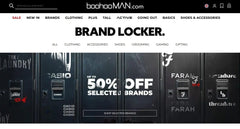
Maximizing E-Commerce Success: Strategies to Reduce Cart Abandonment in the Fashion Retail Sector
Table of Contents
- Key Highlights:
- Introduction
- The Checkout Breakdown – What Is Really Going Wrong?
- How BigCommerce Development Services Rescue Abandoned Carts?
- What Are the Key Metrics to Track After Custom BigCommerce Development?
- Real Results from Real Places
- How to Optimize Your Checkout for Voice & AI Search in 2025?
- FAQ
Key Highlights:
- Cart Abandonment Rates: Approximately 70% of online shopping carts are abandoned, often due to a complicated checkout process.
- Optimization Strategies: Implementing streamlined checkout processes, personalized payment options, and fast loading speeds can significantly reduce abandonment rates.
- Real-World Impact: Customized e-commerce solutions have proven to reduce cart abandonment and increase revenue by optimizing the shopping experience.
Introduction
For online fashion retailers, the thrill of attracting traffic can quickly turn into frustration when potential sales slip away at the checkout stage. Despite investing in advertising and drawing thousands of visitors, many retailers find themselves confronting the stark reality that over 70% of shopping carts are abandoned. This statistic, highlighted by the Baymard Institute, underscores a critical issue: a complicated checkout process is a primary factor contributing to these lost sales.
As fashion e-commerce continues to flourish, particularly in competitive markets across California, Texas, New York, and Washington, understanding and addressing the reasons behind cart abandonment becomes essential. This article serves as a comprehensive guide for fashion retailers, detailing how tailored e-commerce development solutions can streamline the checkout process and enhance customer satisfaction, ultimately leading to increased conversions and revenue.
The Checkout Breakdown – What Is Really Going Wrong?
Many e-commerce owners may instinctively blame their customers for cart abandonment, citing issues such as indecision, distractions, or limited budgets. However, the more pressing reality is that the checkout experience itself is a significant barrier to conversion. A series of fashion-specific pain points often plague the checkout process, leading to high abandonment rates.
Common Checkout Issues
| Problem | Impact |
|---|---|
| Hidden shipping fees | 50% of customers bounce right there |
| Mandatory account creation | 30% of customers exit the process |
| Slow page load | Each extra second can lead to a 20% drop in conversions |
| Limited payment options | Fashion customers expect flexibility |
| Poor mobile UX | Over 60% of buyers now shop on mobile |
These issues are not merely inconveniences; they represent significant hurdles that can deter customers from completing their purchases. The solution lies not in superficial fixes or new themes but in employing e-commerce development experts who can perform an in-depth analysis of a retailer's operations, customer personas, and conversion gaps.
How BigCommerce Development Services Rescue Abandoned Carts?
Custom BigCommerce development services can play a pivotal role in transforming the checkout experience for fashion retailers. Understanding how these services can address specific pain points will illuminate their necessity for retailers aiming to reduce cart abandonment rates.
1. Checkout Streamlining – No More Maze
Complex and lengthy checkout processes are among the foremost reasons for cart abandonment. Leading BigCommerce development agencies implement strategies to simplify the checkout flow, such as:
- One-page checkout flows: Reducing the number of steps required to complete a purchase.
- Auto-fill address fields: Minimizing the effort needed to input shipping information.
- Instant tax and shipping calculation: Providing transparency from the outset to avoid surprises later.
- Postcode-based delivery estimates: Allowing customers to see shipping options and costs based on their location.
By making the purchasing process feel seamless rather than laborious, retailers can significantly improve their conversion rates. According to Baymard, enhancing the design of the checkout process could boost conversion rates by over 35%.
2. Payment Personalization – Let Buyers Choose Their Way
Fashion retail is inherently personal, and so too are payment methods. Customers have diverse preferences when it comes to how they want to pay, whether it’s through Apple Pay, PayPal, or other payment options. A proficient BigCommerce development team can integrate various payment methods, including:
- Buy-now-pay-later (BNPL) tools: Catering to the financial needs of customers.
- Digital wallets like Google Pay and Amazon Pay: Providing convenient and secure payment options.
- Multi-currency logic: Essential for retailers targeting international customers.
Moreover, optimizing for mobile payment gestures is critical, as a significant portion of fashion purchases now occurs on mobile devices.
3. Lightning Speed = Lower Bounce
In the fast-paced world of e-commerce, speed is crucial. If a BigCommerce store experiences slow loading times, particularly during peak shopping periods, it risks losing customers. To address this, development teams can enhance speed through:
- Theme optimization: Removing unnecessary code for faster performance.
- Cloudflare CDN integration: Utilizing a content delivery network to enhance speed.
- Lazy loading for image-heavy pages: Ensuring faster initial loads by only loading images as they are needed.
- Core Web Vitals tuning: Improving essential performance metrics that impact user experience.
A visually appealing yet slow website can deter customers, so maintaining an attractive aesthetic alongside performance is essential.
4. Trust Elements That Actually Work
Fashion shoppers are often emotionally driven and form quick judgments about e-commerce sites. Research shows that they evaluate a website in as little as 2.6 seconds, so establishing trust is vital. BigCommerce development can enhance trust through:
- Exit-intent offers with FOMO triggers: Encouraging immediate action.
- Product trust badges: Signifying quality and reliability.
- Fashion-specific social proof: Displaying real-time purchases to create a sense of urgency and legitimacy.
Incorporating elements like a progress bar in the checkout process can also alleviate anxiety and reduce abandonment.
5. Abandoned Cart Recovery Flows – Built for ROI
Even with an optimized checkout process, some customers may still abandon their carts. This is where effective recovery strategies come into play. A knowledgeable e-commerce developer can integrate systems such as:
- Connecting BigCommerce with email marketing tools like Klaviyo or Mailchimp: Streamlining communication with customers after they abandon their carts.
- Building automated reminder flows: Sending timely reminders to encourage customers to return.
- Offering dynamic discounts: Tailoring promotions based on cart contents and customer behavior.
For instance, if a customer from Washington leaves a cart worth $200, an automated follow-up offering free shipping could entice them to complete the purchase.
What Are the Key Metrics to Track After Custom BigCommerce Development?
Once a custom checkout solution is implemented, the journey doesn’t end. To drive continued growth, particularly in competitive U.S. markets, retailers must track key performance indicators (KPIs) that provide insights into the effectiveness of their strategies.
Essential KPIs for E-Commerce Success
| KPI | Why It Matters |
|---|---|
| Checkout Abandonment Rate | The primary indicator of checkout success |
| Conversion Rate | Measures the effectiveness of traffic in generating sales |
| Time to Checkout | A lower time indicates a smoother customer experience |
| Mobile vs. Desktop Completion | Helps tailor mobile user experience further |
| Cart Recovery Rate | Crucial for optimizing email and SMS follow-up strategies |
Utilizing tools such as Hotjar, Google Analytics, and BigCommerce insights will enable retailers to monitor these metrics effectively. Rather than relying on assumptions, they can make informed decisions based on concrete data.
Real Results from Real Places
The impact of customized BigCommerce solutions is best illustrated through concrete examples. Consider a fashion brand based in California that, prior to implementing custom development, faced a staggering 68% cart abandonment rate. After partnering with a BigCommerce development agency, they achieved remarkable results:
- Checkout load time reduced from 7 seconds to 1.8 seconds
- Cart abandonment decreased to 42%
- Revenue increased by 22% within three months
Similarly, a Texas-based store that incorporated multi-step progress indicators and Klarna integration saw a 31% increase in cart recovery rates. These are not mere coincidences; they exemplify how targeted optimizations serve as powerful levers for growth.
How to Optimize Your Checkout for Voice & AI Search in 2025?
As voice commerce continues to gain traction, aligning e-commerce strategies with emerging technologies becomes paramount. With Google Search increasingly prioritizing AI-driven results, retailers must ensure their checkout processes are optimized for these advancements.
Strategies for Future-Proofing Your BigCommerce Checkout
- Add schema markup: Enhancing product visibility in search results.
- Utilize conversational FAQs: Improving the chances of appearing in voice search queries.
- Optimize mobile checkout for voice input: Making it easier for customers to complete purchases using voice commands.
- Minimize and prefill form fields: Reducing friction in the checkout process.
- Implement AI chatbots: Providing immediate assistance to customers during checkout.
Many store owners overlook these crucial updates, presenting a unique opportunity for e-commerce development experts who understand both technical SEO and how language models interpret structured data and user intent.
Conclusion
In the rapidly evolving world of e-commerce, particularly in the fashion sector, the need to address cart abandonment is more pressing than ever. By leveraging tailored BigCommerce development services, retailers can optimize their checkout processes, enhance user experience, and ultimately drive conversions. The strategies outlined above not only aim to reduce abandonment rates but also empower retailers with the tools necessary for sustained growth in a competitive landscape.
FAQ
What is cart abandonment? Cart abandonment refers to the phenomenon where online shoppers add items to their shopping cart but leave the website without completing the purchase.
What are the main reasons for cart abandonment in e-commerce? Factors include complicated checkout processes, hidden fees, slow page loading times, and limited payment options.
How can I reduce cart abandonment on my online store? Implementing streamlined checkout processes, offering diverse payment options, ensuring fast page loads, and integrating trust elements can help reduce cart abandonment.
What metrics should I track after optimizing my checkout process? Key metrics include checkout abandonment rate, conversion rate, time to checkout, mobile vs. desktop completion rates, and cart recovery rates.
How can I prepare for the future of e-commerce with voice search? Using schema markup, optimizing for conversational FAQs, and implementing AI chatbots can help future-proof your checkout process for voice and AI search.
당신의 전자상거래를 우리의 주간 통찰력과 업데이트로 강화하세요!
상거래 세계에서 일어나는 일에 대한 정보를 계속 업데이트하세요
이메일 주소





